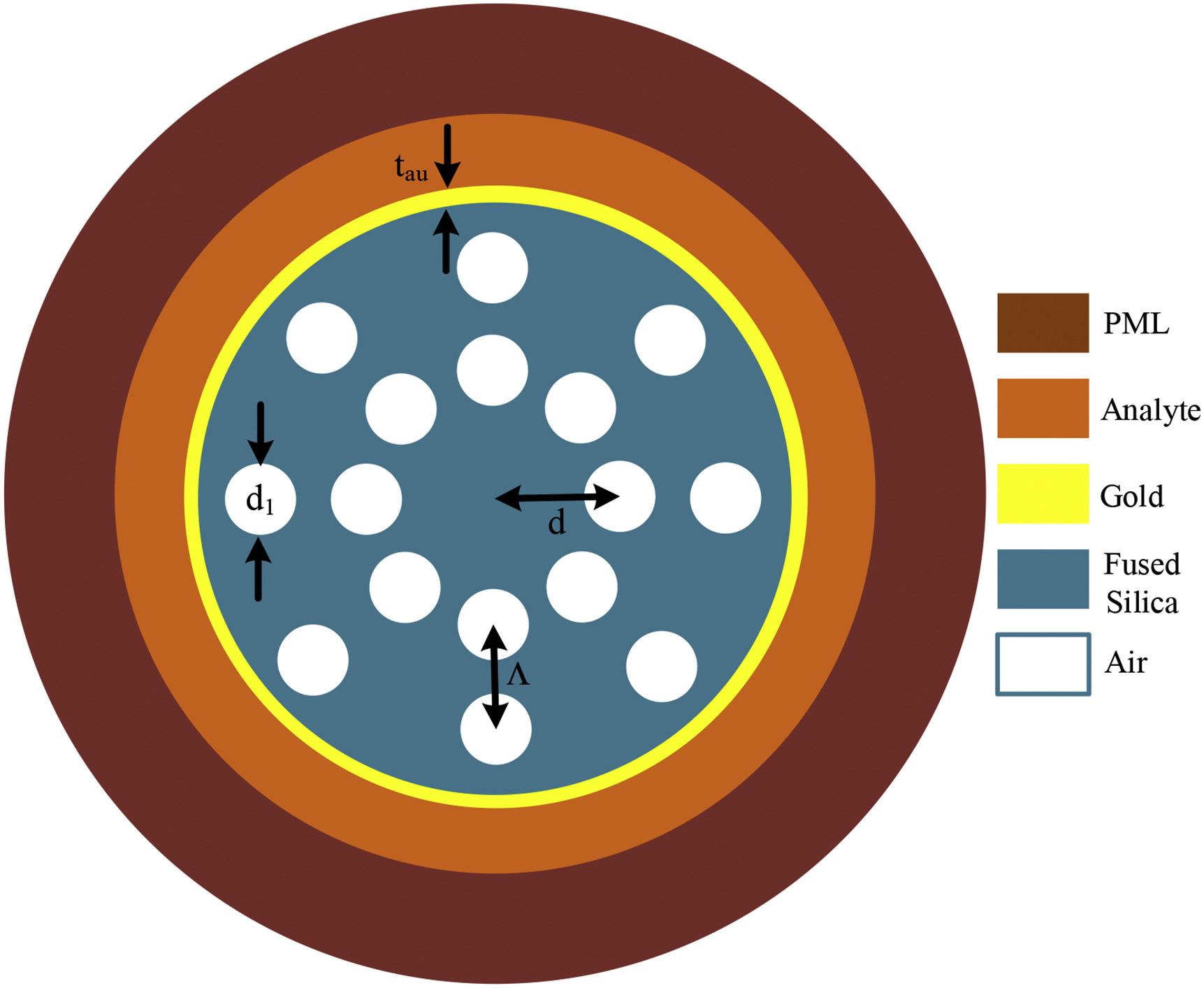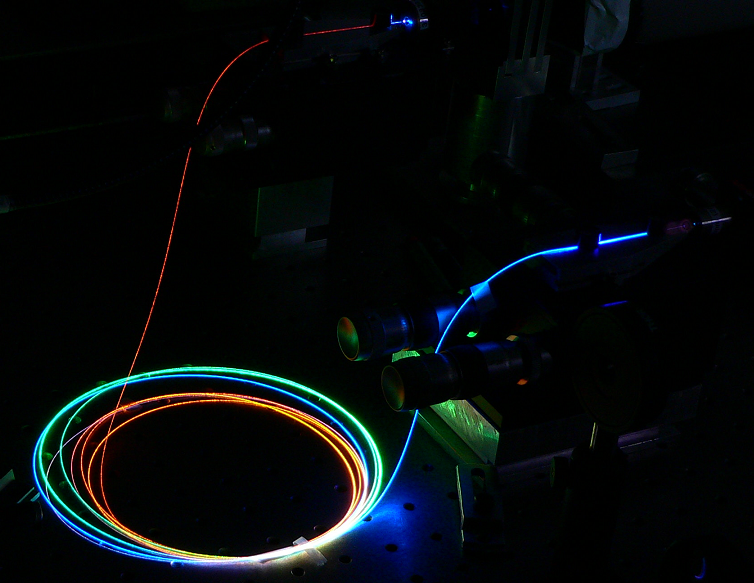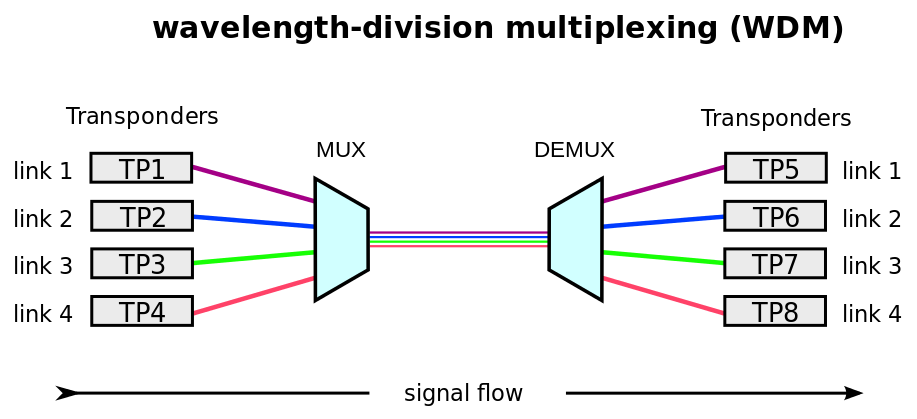Introduction
Supercontinuum lasers are a special type of lasers that emit an extremely wide and continuous spectrum of light. When they were first invented, these lasers were known as the “white-light” lasers as the spectrum emitted was comprised of the visible spectrum of light covering wavelengths between 380 nm and 700 nm. In general, the term “supercontinuum” encompasses all types of spectrum broadening outputs including those in the invisible regions.
In this blog post, we will discuss the process of supercontinuum generation and its discovery as well as the major applications of supercontinuum lasers to date.
Background of Supercontinuum Generation
Supercontinuum generation occurs when high-power super short pulses, on the order of picoseconds or shorter, travel through a solid, liquid, or gaseous nonlinear medium. The high intensity of the laser pulse induces a plethora of non-linear processes including stimulated Raman scattering, self-phase modulation, cross-phase modulation, and four-wave mixing. The type and power of the pump as well as the dispersion and nonlinear characteristics of the medium determine the width of the spectrum emitted and its spectral location.

Cross-section of a microstructured optical fiber (MOF). Courtesy of ScienceDirect.
For instance, pumping dispersion-shifted fibers at 1500 nm results in a spectrum that extends from 1300 nm to 1700 nm. This is a result of treating the material the fiber is made of to cancel its dispersion properties. On the other hand, a special design of microstructured optical fibers can be used to generate a spectrum containing the visible range and extending to the near-infrared region.

Supercontinuum generation in a microstructured optical fiber showing colors of the visible spectrum. Courtesy of Wikimedia Commons.
Discovery of Supercontinuum Generation
Supercontinuum generation was observed for the first time in 1970 by Alfano and Shapiro when they started shooting ultrashort laser pulses through liquids or condensed media like glass. They conducted a series of experiments in an attempt to characterize the self-phase modulation of nonlinear materials in different states, condensed or liquid, but it resulted in a groundbreaking discovery. They recorded a spectral band starting from 400 nm and going up to 700 nm in bulk glass, otherwise known as white light. The phenomenon was referred to as frequency broadening, white light generation, and anomalous frequency broadening for over 2 decades after its discovery.
It was not until 1980 that the term “supercontinuum” was used to describe this light generation process. The invention of silica optical fibers around the 1970s also helped advance research about different physical processes critical for supercontinuum generation. However, interest in developing supercontinuum sources only piqued around the 1990s when potential telecommunication applications were identified and great progress was made in the area of nonlinear optical fibers.
Six Applications of Supercontinuum Lasers
With such unique characteristics supercontinuum sources became useful in a number of application especially when such sources became available commercially. Let’s look into a few such applications below:
1. Spectroscopy
Soon after their invention, supercontinuum lasers found applications in spectroscopy and were predominantly used in this field for many years. Supercontinuum laser spectroscopy helped advance research on inverse Raman scattering, time-resolved absorption and excitation spectroscopy, and primary vision processes. Owing to their broad wavelength coverage, supercontinuum lasers allow for the detection of several species simultaneously.
2. Microscopy
Unlike conventional wide-field microscopy, confocal and multiphoton microscopies call for use of multiple lasers to form 3D images of specimens. This requirement cannot be satisfied using other sources as only a spatially coherent source can create a small diffraction-limited spot and maintain high resolution. This increases the complexity as well as the cost of the microscope. Fortunately, the use of supercontinuum lasers offers a wide spectral coverage all while possessing the same properties as a monochromatic laser.
3. Telecommunications
Perhaps one of the most important applications of supercontinuum lasers is their role as multi-wavelength sources crucial for wavelength-division-multiplexing systems. This creates multiple information channels that can be transmitted through the same optical fiber.

Wavelength-division multiplexing illustration showing how different data channels generated by the same supercontinuum source are being transported through the same link. Courtesy Wikimedia Commons.
In addition to being great broadband sources, supercontinuum lasers are also characterized by their ultrashort pulses which form the foundation of modern telecommunication systems.
4. Optical Fiber Characterization
Their role as multi-wavelength sources is also crucial for applications such as optical fiber characterization. New optical fibers with different properties are constantly invented to meet the needs of specific applications and technologies. The easiest, most cost-effective, and convenient way to characterize these fibers is supercontinuum lasers. These lasers allow for the measurement of the attenuation and dispersion properties of the fiber at specific wavelengths while using the same instrument.
5. Frequency Combs
Frequency combs are essential for optical metrology applications, and they can be used as high-precision frequency “rulers”. A frequency comb is a spectrum of light comprised of several frequency peaks equally separated. This can be achieved using a supercontinuum source as it is characterized by a wide spectrum of light spanning at least one optical octave.
6. Supercontinuum Light Sources in Biophotonics
Biophotonics studies and applications including optical imaging, laser surgery, and light therapy have long benefited human health and wellbeing. In most applications, it is preferable to manipulate the light source instead of the patient, sample, or biological matter, and in some cases, an entirely different source is required to avoid damaging the sample tested. Although the invention of lasers supported the field of biophotonics significantly, multiple laser sources were still required to successfully perform certain experiments. This problem was solved when the supercontinuum fiber lasers were invented. It was possible to carry out different experiments and perform multiple tests using the same source.
Additionally, the development of supercontinuum lasers in the ultraviolet UV and infrared IR ranges made for excellent sources for several biomedical applications.
Another biophotonic application worth mentioning is optical coherence tomography (OCT). It is the equivalent of ultrasound, a noninvasive technology for imaging tissue. Nowadays, many OCT systems rely on low-noise supercontinuum lasers to capture better pictures.
Summary
The discovery of supercontinuum generation paired with the invention of nonlinear optical fibers and waveguides allowed for the rapid and easy implementation of supercontinuum lasers in a handful of applications. One of the biggest advantages of using this technology is its multi-wavelength characteristic and its broad spectral range that can be tuned to meet the needs of specific applications.
If you are curious about supercontinuum sources, check out FindLight marketplace where you can find a wide range of broadband sources.
Today's blog post is sponsored by Connet Laser Technology - the leaders in the development and manufacture of fiber lasers and optical fiber technologies
